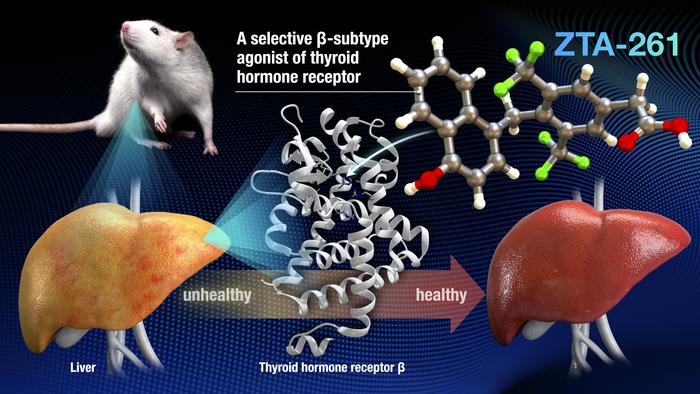Researchers at Nagoya University have developed a novel compound that could revolutionize the treatment of lipid disorders. The drug, named ZTA-261, targets the thyroid hormone receptor beta (THRβ) with unprecedented selectivity, potentially offering a safer and more effective approach to managing conditions like dyslipidemia.
A Targeted Approach to Lipid Metabolism
Lipid disorders affect millions worldwide, with approximately one in ten people classified as obese or overweight due to abnormalities in lipid metabolism. These conditions, known as dyslipidemia, increase the risk of serious health issues such as heart attacks and strokes.
Thyroid hormones have long been recognized for their role in regulating metabolism, including lipid processing. However, their use as treatments has been limited due to wide-ranging effects on multiple body systems. Thyroid hormones act through two types of receptors: alpha (THRα) and beta (THRβ). While THRα is prevalent in the brain, heart, and muscles, THRβ is primarily found in the liver and pituitary gland.
“Our findings suggest that ZTA-261 is much less toxic than T3 and even less toxic than GC-1, which is known as a THRβ-selective compound,” explains Taeko Ohkawa, one of the study’s researchers. “I find it amazing that the difference in THR beta-selectivity between ZTA-261 and GC-1—100 times selectivity vs. 20 times selectivity—truly has this big an impact on heart and bone toxicity.”
Promising Results with Fewer Side Effects
The Nagoya University team tested ZTA-261 against two other compounds: GC-1 (another thyroid hormone derivative) and T3 (a natural thyroid hormone). Their findings, published in Communications Medicine, revealed that ZTA-261 demonstrated nearly 100 times higher selectivity for THRβ compared to THRα. This selectivity is crucial, as it allows the drug to target lipid metabolism in the liver without triggering the adverse effects associated with THRα activation, such as heart enlargement and bone loss.
In mouse studies, ZTA-261 effectively reduced lipid levels in both the liver and blood. Importantly, markers for heart and bone damage were significantly lower in mice treated with ZTA-261 compared to those given T3. The researchers also found no indication of liver toxicity, a common concern in drug development.
Masakazu Nambo, another key researcher on the project, highlights the importance of their approach: “ZTA-261 has extremely high affinity and selectivity for THRβ among the thyroid hormone derivatives developed to date. In the process of synthesizing a variety of derivatives, we have found that precise molecular design is crucial for both selectivity and affinity.”
Why it matters: The development of ZTA-261 represents a significant step forward in the treatment of lipid disorders. By selectively targeting THRβ, this compound could offer a safer and more effective option for millions of people struggling with conditions like dyslipidemia, potentially reducing their risk of serious cardiovascular events.
While these results are promising, it’s important to note that further studies, including human clinical trials, will be necessary before ZTA-261 can be considered for widespread use. Questions remain about its long-term effects and how it might interact with other medications commonly prescribed for lipid disorders.
As research continues, the team at Nagoya University’s Institute of Transformative Bio-Molecules (WPI-ITbM) plans to explore further applications of their molecular design approach. This breakthrough could pave the way for a new generation of targeted therapies, not only for lipid disorders but potentially for other metabolic conditions as well.


